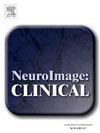Fully automated pipeline for the fiber tractography of the anterior optic pathway in patients with sellar and parasellar tumors and analysis of the microstructural alterations
IF 3.6
2区 医学
Q2 NEUROIMAGING
引用次数: 0
Abstract
Compared to conventional morphological MR imaging, diffusion tractography may improve the visualization of the anterior optic pathway (AOP), thus enhancing the understanding of its anatomical relationship with surrounding sellar/parasellar tumors (SPTs).
We aimed to develop a diffusion tractography pipeline for automatic and reliable reconstruction of the AOP and to investigate its microstructural alterations in SPT patients.
A multishell diffusion protocol (b-values = 0,300,1000,2000 s/mm2; 64 maximum gradient directions; 2-mm isotropic voxel) on a 3T scanner, followed by a fully automated pipeline developed in-house to perform the probabilistic tractography, based on multishell-multitissue constrained spherical deconvolution modeling of the signal, was performed. It was first tested retrospectively in 10 healthy controls, then prospectively applied in 25 additional healthy controls and 35 SPTs patients. Microstructural parameters were compared between patients and controls using an along-tract approach.
The study included 70 subjects: 35 healthy controls (18 females, mean age 50.7 ± 14.3 years) and 35 patients with SPTs displacing the optic chiasm (18 females; mean age 53.7 ± 16.4 years). The AOP reconstruction was successfully performed in all normal controls and patients. A correct correspondence with surgical inspection was identified in 84.7 % of patients who underwent surgery. Patients had significantly lower mean diffusivity (MD) values at the level of the chiasm (p < 0.01), that correlated with supero-inferior chiasmatic displacement (R = -0.49, p = 0.01).
A novel, fully automated diffusion tractography pipeline for the AOP was developed and validated in patients with sellar/parasellar tumors. Reduced MD values at the chiasm level may indicate compression or gliosis in case of displacement.
鞍区及鞍旁肿瘤患者前视神经通路纤维束造影的全自动管道及显微结构改变分析
与传统形态学MR成像相比,弥散束造影可以改善前视神经通路(AOP)的可视化,从而增强对其与周围鞍区/鞍旁肿瘤(SPTs)的解剖关系的理解。我们的目标是开发一种用于自动可靠重建AOP的扩散束造影管道,并研究SPT患者AOP的显微结构改变。多壳扩散协议(b值= 0,300,1000,2000 s/mm2;64个最大梯度方向;2毫米各向同性体素)在3T扫描仪上进行,然后使用内部开发的全自动管道进行概率轨迹成像,基于信号的多壳-多组织约束球面反褶积建模。首先在10名健康对照中进行回顾性测试,然后在另外25名健康对照和35名spt患者中进行前瞻性测试。采用沿道入路比较患者和对照组的显微结构参数。本研究纳入70名受试者:35名健康对照者(18名女性,平均年龄50.7±14.3岁)和35名SPTs移位视交叉患者(18名女性;平均年龄53.7±16.4岁)。所有正常对照和患者的AOP重建均成功。在接受手术的患者中,84.7%的患者与手术检查正确对应。患者在交叉水平的平均弥漫性(MD)值显著降低(p <;0.01),与上下交叉位移相关(R = -0.49, p = 0.01)。在鞍区/鞍旁肿瘤患者中开发并验证了一种新的全自动弥漫性动脉导管。交叉处MD值降低可能表明移位时压迫或神经胶质瘤。
本文章由计算机程序翻译,如有差异,请以英文原文为准。
求助全文
约1分钟内获得全文
求助全文
来源期刊

Neuroimage-Clinical
NEUROIMAGING-
CiteScore
7.50
自引率
4.80%
发文量
368
审稿时长
52 days
期刊介绍:
NeuroImage: Clinical, a journal of diseases, disorders and syndromes involving the Nervous System, provides a vehicle for communicating important advances in the study of abnormal structure-function relationships of the human nervous system based on imaging.
The focus of NeuroImage: Clinical is on defining changes to the brain associated with primary neurologic and psychiatric diseases and disorders of the nervous system as well as behavioral syndromes and developmental conditions. The main criterion for judging papers is the extent of scientific advancement in the understanding of the pathophysiologic mechanisms of diseases and disorders, in identification of functional models that link clinical signs and symptoms with brain function and in the creation of image based tools applicable to a broad range of clinical needs including diagnosis, monitoring and tracking of illness, predicting therapeutic response and development of new treatments. Papers dealing with structure and function in animal models will also be considered if they reveal mechanisms that can be readily translated to human conditions.
 求助内容:
求助内容: 应助结果提醒方式:
应助结果提醒方式:


